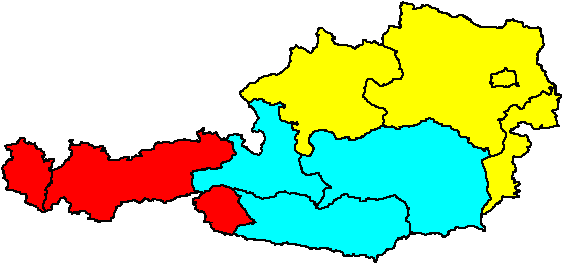Mass
Representation of the unit of mass

Since 20 May 2019 the unit of mass has been represented by defining the value for Planck's constant.
Even if the redefinition of mass is based on a quantum mechanical natural constant, weights are still used in daily practice for the measurement of the mass.
The secondary standards of the BEV are derived from the national prototype, i.e. the scale of masses from 1 mg to 500 kg is built up by means of mass comparators. Using the working standards traceable to them the weights and weighing instruments of the verification offices as well as the calibration and verification bodies are calibrated.
The calibrations are carried out by comparator weighing instruments and more and more by mass roboters on the base of a substitution procedure, at which the weight to be tested and the standard weight are compared consecutively with the same auxiliary weight and so the difference in the weighing results is determined.
Verification of weights and weighing instruments

Weights and weighing instruments are for various purposes subject to mandatory verification in Austria. From the dosage of medicines, to the sale of foodstuffs, to the weighing of loaded freight wagons, masses are determined for trade with calibrated scales.
When calibrating measuring instruments, a distinction is made between initial verification (initial verification of a new measuring instrument), reverification (recurring verification within the subsequent verification) and new verification.
Since 2006 the Measuring instruments directive (MID) is applied in the member states of the EU. This directive regulates the first placing on the market of measuring instruments subject to mandatory verification by so called conformity assessment procedures. Automatic weighing instruments are covered by the MID, non-automatic weighing instruments are covered by the directive for non-automatic weighing instruments, which entered into force in Austria in the year 1994. Hence they can be placed on the market for the first time without further national type approval and initial verification. The assessment of conformity is equal to the initial verification.
Automatic truck scales do not fall within the scope of a directive and are subject to national regulations as before.
Weighing instruments are generally approved for verification if they meet certain quality requirements.
The new and subsequent verification of all weighing instruments and weights are subject to national regulations and is carried out in Austria by accredited verification bodies. The interval for subsequent verification is for the most weighing instruments and weights 2 years.
See Measuring Instruments Directive MI-006
See directive 2014/31/EU for Non-automatic weighing instruments
Gravity Zones in Austria
as published in the Amtsblatt für das Eichwesen Nr. 5/1996

The gravity zones are valid for non automatic weighing instruments (NAWIs) of class III, depending on the number of divisions as given below (NAWIs adjusted to the given gravity value may be placed anywhere within the relevant zone):
| n = 1000 | no marking of the place of use necessary |
| 1000 < n = 3000 | one zone „Österreich“ oder „A“ with g = 9,8065 m/s² is sufficient |
| 3000 < n = 5000 | Zone„B, NÖ, OÖ, W“ with g = 9,8073 m/s² |
| Zone„K, S, ST“ with g = 9,8065 m/s² | |
| Zone„T, V”with g = 9,8051 m/s² | |
| n > 5000 | place of use to be marked (eg. „Innsbruck“) |
For NAWIs of class IIII no marking of the place of use is necessary. NAWIs of class I or II have to be marked with the exact place of use.
Non automatic weighing instruments of class I and II
For non automatic weighing instruments of class I and II the exact specification of the installation site is required in any case. (Table of gravitational values for Austria)
Alternatively, a procedure for taking gravity into account which is recognized throughout Europe has been published in WELMEC 2.
Information about gravity zones of other European countries can be found here.